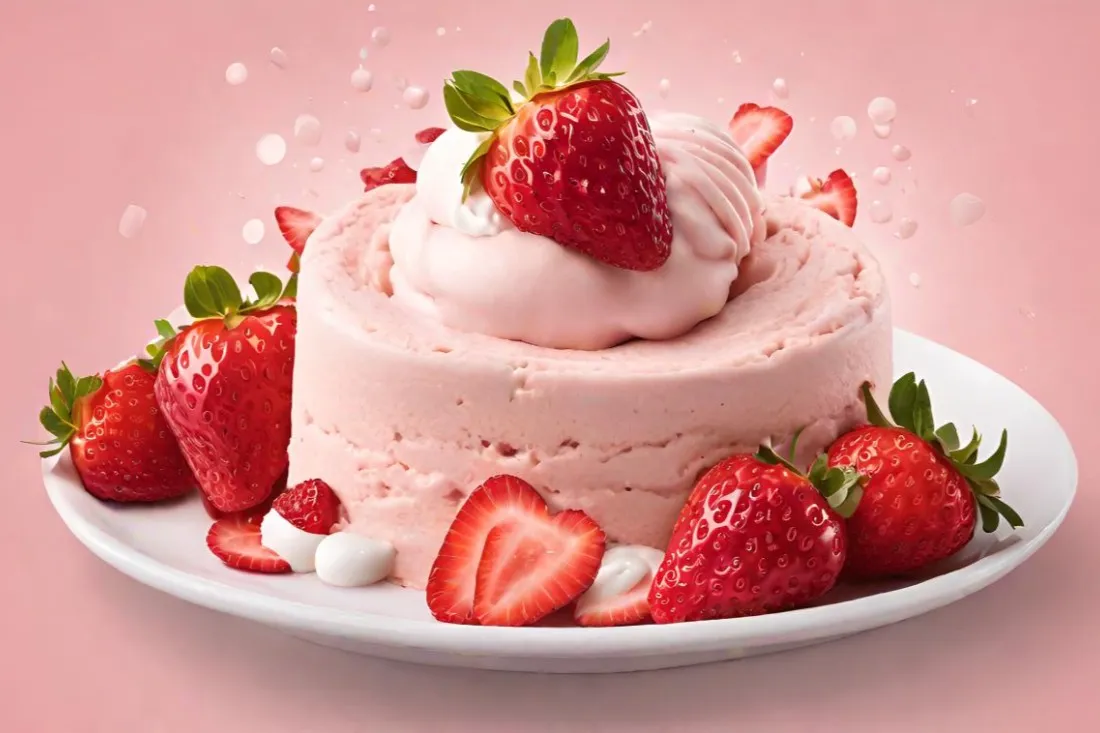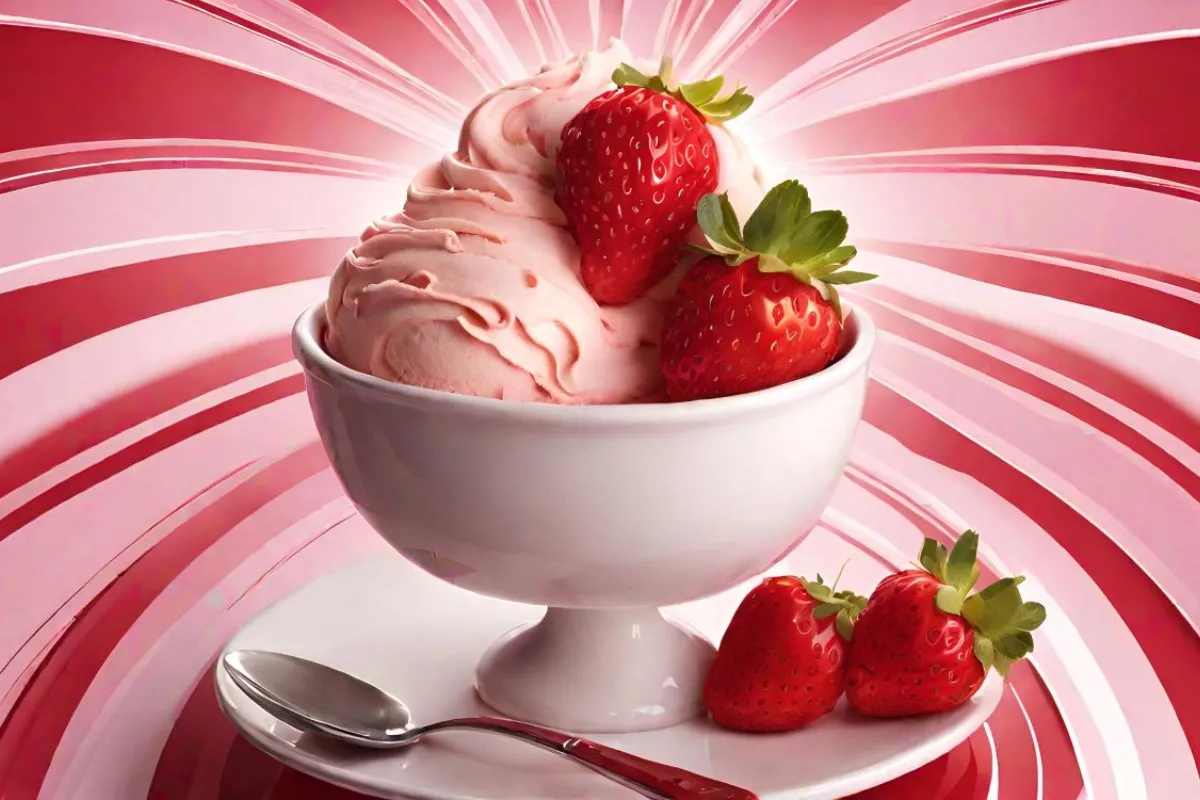In this article, we delve into the presence of Red 40 in Strawberry Shortcake Ice Cream, exploring its impact on health and consumer choices. Discover the nuances of this popular dessert’s ingredients and the ongoing debate about artificial food coloring.
In this deep dive, we’ll peel back the layers of Strawberry Shortcake Ice Cream, examining its ingredients and the presence of Red 40, a common food dye. By the end of this exploration, you’ll not only have your answer but also gain insights into the broader implications of using artificial colors in our foods.
Introduction to Strawberry Shortcake Ice Cream and Red 40
What is Strawberry Shortcake Ice Cream?
Ah, Strawberry Shortcake Ice Cream! It’s the kind of dessert that brings back memories of sun-soaked days and carefree indulgences. This frozen delight typically features a harmonious blend of sweet strawberry flavors and creamy, cake-like elements. It’s a dance of textures and tastes that has won over hearts and taste buds alike.
But, as we all know, there’s more to food than meets the eye (or the palate, in this case). The ingredients that make up this icy treat are crucial not just for flavor, but for understanding its overall impact on health and well-being.
Overview of Red 40 and Its Usage
Now, let’s turn our attention to the elephant in the room: Red 40. Officially known as Allura Red AC, it’s a synthetic dye that’s no stranger to controversy. You’ll find it in a variety of products, from candies to beverages, lending them that eye-catching hue. However, its presence is not without concerns. Discussions around its safety and potential health implications have been ongoing, with various studies and regulatory bodies weighing in.
It’s a topic that’s as vibrant as the color itself, sparking debates and making consumers increasingly vigilant about their food choices. But what’s the real deal with Red 40, especially when it comes to our cherished Strawberry Shortcake Ice Cream? That’s the journey we’re about to embark on.
So, grab a spoon, and let’s delve into the world of Strawberry Shortcake Ice Cream, discovering whether Red 40 plays a part in painting this picture-perfect dessert.
Ingredients Breakdown of Strawberry Shortcake Ice Cream

Key Ingredients in Popular Brands
When it comes to deciphering what’s in our beloved Strawberry Shortcake Ice Cream, the plot thickens—literally and figuratively. Brands like Nestlé have their own take on this classic treat. A typical Strawberry Shortcake Ice Cream bar might feature an enchanting mix of creamy vanilla, a luscious strawberry center, and a crumb coating that’s reminiscent of the traditional cake. But what about the colors and additives that make these bars so visually appealing? This is where our investigation deepens.
Each brand has its secret recipe, but common ingredients often include cream, strawberries, sugar, and yes, sometimes food dyes. It’s important to read the labels carefully, as the ingredients can vary significantly from one brand to another.
Presence of Red 40 in Ice Cream
So, does Strawberry Shortcake Ice Cream contain the infamous Red 40? The answer isn’t as straightforward as one might hope. While some brands may use natural colorings derived from fruits and vegetables, others might opt for synthetic dyes like Red 40 to achieve that vibrant strawberry hue.
It’s a tale of two choices—natural versus artificial. And it’s not just about the color. The use of Red 40 opens up a can of worms regarding health concerns and dietary restrictions. For those with sensitivities or preferences towards natural ingredients, the presence of Red 40 can be a deal-breaker.
To get to the bottom of this, let’s turn to the ingredient lists and nutritional information provided by brands like Nestlé. A careful examination reveals whether Red 40 is a guest at this ice cream party.
Health Implications of Red 40
Understanding Food Dyes and Health
Let’s talk about the elephant in the room: food dyes, specifically Red 40. This synthetic dye is like a celebrity in the world of food colorants, but with its fair share of controversies. While it does a fantastic job at making foods visually appealing, there’s been quite a bit of buzz about its effects on health.
The debate around food dyes, including Red 40, often revolves around their potential impact on human health. Some studies suggest a link between synthetic food dyes and various health concerns, though the evidence is not always conclusive. It’s a bit of a murky water situation, where more research is needed to fully understand the implications.
Specific Concerns with Red 40
When it comes to Red 40, the concerns are quite specific. There have been debates about its potential to cause allergic reactions in some individuals. Additionally, there’s been a long-standing discussion about whether Red 40 could have effects on children’s behavior, particularly in terms of hyperactivity. This has led to calls for more stringent regulations or even bans in certain countries.
However, it’s essential to remember that regulatory bodies like the FDA have deemed Red 40 safe for use within certain limits. It’s about balancing the evidence we have with the guidelines set by these authorities.
In the realm of Strawberry Shortcake Ice Cream, the presence of Red 40 becomes a significant point of consideration for health-conscious consumers. It’s not just about indulging in a sweet treat; it’s about making informed choices based on what we know about the ingredients we consume.
Exploring Alternatives and Consumer Choices

Natural vs. Artificial Coloring
In the world of food, the debate between natural and artificial ingredients is a hot topic, and food coloring is at the forefront of this discussion. When it comes to Strawberry Shortcake Ice Cream, this debate centers around the use of synthetic dyes like Red 40 versus natural alternatives.
Consumers are increasingly leaning towards natural ingredients, driven by a desire for healthier, more wholesome foods. This shift has prompted many food manufacturers to explore natural color sources, such as beet juice, turmeric, and spirulina. These natural alternatives not only provide vibrant colors but also come with fewer health concerns compared to their synthetic counterparts.
Popular Strawberry Shortcake Ice Cream Alternatives
As consumers become more health-conscious, the demand for ice cream that uses natural colorants is on the rise. This has led to the emergence of various Strawberry Shortcake Ice Cream alternatives that boast all-natural ingredients. These versions often use real strawberries to achieve that signature pink hue, offering a more authentic and potentially healthier option for dessert lovers.
The move towards natural ingredients isn’t just about avoiding synthetic dyes; it’s also about embracing simplicity and transparency in food labeling. Consumers are increasingly scrutinizing ingredient lists, seeking products with ingredients they recognize and trust.
For those looking to avoid Red 40, the good news is that there are plenty of Strawberry Shortcake Ice Cream options out there that use natural colors. It’s all about making informed choices based on personal preferences and health considerations.
Environmental and Ethical Considerations
Sustainable Practices in Ice Cream Production
In an era where environmental consciousness is on the rise, it’s essential to consider the sustainability of food production. This includes the manufacturing of treats like Strawberry Shortcake Ice Cream. Here, we explore how brands are adopting eco-friendly practices, from sourcing ingredients to packaging.
- Eco-Friendly Ingredient Sourcing: Understanding how ingredients like strawberries and dairy products are sourced can shed light on the environmental footprint of our favorite ice cream.
- Packaging and Waste Reduction: Examining the efforts by ice cream manufacturers to reduce waste through recyclable or biodegradable packaging.
Ethical Considerations in Food Coloring
The use of food dyes, including Red 40, isn’t just a health concern but also an ethical one. This part of the article delves into the ethics behind food coloring choices.
- Transparency in Labeling: Discussing the importance of clear labeling that allows consumers to make informed decisions based on their ethical and health considerations.
- Alternatives to Synthetic Dyes: Highlighting how companies are turning to natural color sources as a response to consumer demand for more ethically produced foods
Cultural and Historical Perspective of Strawberry Shortcake Ice Cream
Strawberry Shortcake: From Classic Dessert to Ice Cream Evolution
This section will delve into the rich history and cultural significance of strawberry shortcake, tracing its evolution from a beloved dessert into a popular ice cream flavor. We’ll explore:
- Origins of Strawberry Shortcake: A brief history of the dessert, from its early beginnings to its status as a classic American treat.
- Evolution into Ice Cream: The transformation of strawberry shortcake from a traditional dessert to an innovative ice cream flavor, reflecting changing consumer tastes and culinary creativity.
Impact on Culinary Trends and Dessert Innovation
The journey of strawberry shortcake ice cream is not just a story of flavor development but also a reflection of broader trends in the culinary world. This part will highlight:
- Influence on Dessert Trends: How the popularity of strawberry shortcake ice cream has influenced other dessert innovations and flavor combinations.
- Fusion of Tradition and Modernity: Examining how this flavor bridges traditional dessert concepts with modern ice cream production, offering a unique blend of nostalgia and innovation.
Frequently Asked Questions

In this section, we address commonly asked questions about Strawberry Shortcake Ice Cream and Red 40. This revision aims to enhance readability with more transition words and shorter sentences.
Common Queries About Strawberry Shortcake Ice Cream
- What are the main ingredients in Strawberry Shortcake Ice Cream? Firstly, most varieties typically include cream, sugar, strawberries, and cake or biscuit. However, the exact ingredients can vary by brand.
- Is Red 40 harmful to health? On the topic of Red 40, while the FDA approves its use within limits, some studies suggest potential health concerns. This is particularly true for sensitive individuals.
- Can I find Strawberry Shortcake Ice Cream without artificial colors? Importantly, for those avoiding synthetic dyes, many brands and homemade recipes use natural colors. These derive from fruits and vegetables, offering a healthier option.
- Are there natural alternatives to Red 40? Moreover, natural colorants like beet juice, carrot extract, and annatto are increasingly popular. They serve as alternatives to synthetic dyes in foods, including ice cream.
Red 40: Myths vs. Facts
- Does Red 40 cause hyperactivity in children? Regarding hyperactivity, some studies suggest a link with synthetic food dyes. However, the evidence isn’t definitive. More research is needed in this area.
- Are there any allergic reactions associated with Red 40? Concerning allergic reactions, they are rare but can occur. Being aware of personal allergies to food additives like Red 40 is crucial.
- Is Red 40 vegan? Lastly, Red 40, being a synthetic dye, does not contain animal-derived ingredients. Thus, it is suitable for those on a vegan diet.
Conclusion
Wrapping Up: The Red 40 Debate in Strawberry Shortcake Ice Cream
As we conclude, let’s reflect on our exploration of Strawberry Shortcake Ice Cream and Red 40. This journey has been about more than just a dessert. It’s a narrative of consumer choice, health, and ingredient transparency.
We’ve discovered that the presence of Red 40 depends on the brand. While some use this dye, others opt for natural colors. Health implications of Red 40 remain a topic of debate. Despite FDA approval, some consumers choose to avoid it.
This exploration underscores the importance of informed choices. It’s vital to understand what goes into our food. As consumers, we have the power to influence the market. Opting for natural ingredients or making homemade versions can align with our health values.
In essence, Strawberry Shortcake Ice Cream with Red 40 is more than a treat. It’s a window into the evolving world of food production and consumer preferences. Here’s to making informed, tasty, and health-conscious choices!

